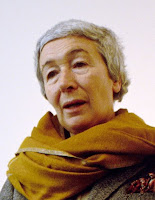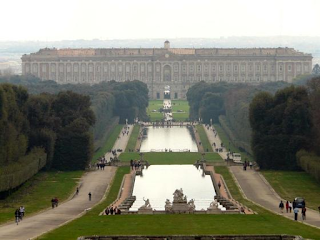Costantino Rocca - golfer
Italian whose success inspired Open champion
Costantino Rocca, who until this year was the most successful Italian in the history of international golf, was born on this day in 1956 in Almenno San Bartolomeo, near Bergamo in northern Italy. Rocca, who turned professional at the age of 24 in 1981, enjoyed his best years in the mid-1990s, peaking with second place in the Open Championship at St Andrews in 1995. He was beaten by the American John Daly in a four-hole play-off but was perhaps as popular a runner-up as there has been in the history of the tournament after the incredible putt he sank on the final green to deny Daly victory inside the regulation 72 holes. Needing a birdie to be level with Daly at the top of the leaderboard after the American finished six under par, Rocca appeared to have blown his chance when his poorly executed second shot - a chipped approach that was meant to leave him in easy putting distance of the hole - did not even make it safely on to the green, coming to rest in an area known colloquially as ‘the Valley of Sin’. It left him 65ft - almost 20m - short of the hole, needing somehow to hole a putt that had first to go uphill and then break sharply to the right. Read more…
________________________________________________________________
Gae Aulenti – architect
Designer who made mark in Italy and abroad
The architect Gae Aulenti, who blazed a trail for women in the design world in post-War Italy and went on to enjoy a career lasting more than half a century, was born on this day in 1927 in Palazzolo dello Stella, a small town about midway between Venice and Trieste. In a broad and varied career, among a long list of clients Aulenti designed showrooms for Fiat and Olivetti, furniture for Zanotta, department stores for La Rinascente, a railway station in Milan, stage sets for theatre and opera director Luca Ronconi and villas for wealthy private clients. She lectured at the Venice and Milan Schools of Architecture and was on the editorial staff of the design magazine, Casabella. Yet she is best remembered for her part in transforming redundant buildings facing possible demolition into museums and galleries, her most memorable project being the interior of the Beaux Arts-style Gare d'Orsay railway station in Paris, where she turned the cavernous central hall, a magnificent shed lit by arching rooflights, into a minimalist exhibition space for impressionist art. Aulenti also created galleries at the Pompidou Centre in Paris and the Palau Nacional in Barcelona. Read more…
__________________________________________________________________
Pope Adrian IV
The warlike conduct of England’s one and only pontiff
The only Englishman to have ever sat on the papal throne, Nicholas Breakspear, became Pope on this day in 1154 in Rome. Breakspear, who was from Abbots Langley in Hertfordshire, had previously been created Cardinal Bishop of Albano by Pope Eugene III. After his election as Pope, Breakspear took the name of Adrian IV (also known as Hadrian IV) and immediately set about dealing with the anti-papal faction in Rome. After Frederick Barbarossa, Duke of Swabia, caught and hanged the leader of the faction, a man known as Arnold of Brescia, Adrian crowned Frederick as Holy Roman Emperor in 1155 to reward him. He then formed an alliance with the Byzantine Emperor, Manuel Comnenus, against the Normans in Sicily. Adrian raised mercenary troops in Campania to fight alongside the Byzantine forces and the alliance was immediately successful, with many cities giving in, either because of the threat of force or the promise of gold. But the Normans launched a counter attack by land and sea and many of the mercenaries deserted leaving the Byzantine troops outnumbered and forced to return home. Read more…
__________________________________________________________________
Luigi Galvani - physicist and biologist
Death of the scientist who seemed to give dead frog new life
Luigi Galvani, the first scientist to discover bioelectricity, died on this day in 1798 in Bologna. Galvani discovered that the muscles in the leg of a dead frog twitched when struck by an electrical spark. This was the beginning of bioelectricity, the study of the electrical patterns and signals of the nervous system. The word ‘galvanise’, to stimulate by electricity, or rouse by shock and excitement, comes from the surname of the scientist. Galvani studied medicine at Bologna University and, after graduating in 1759, became an honorary lecturer of surgery and then subsequently of theoretical anatomy. He became the first scientist to appreciate the relationship between electricity and animation when he was dissecting a frog one day. His assistant touched an exposed nerve in the leg of the frog with a metal scalpel that had picked up an electrical charge. They both saw sparks and the frog’s leg kicked. The phenomenon was dubbed ‘galvanism’. In 1797 Galvani refused to swear loyalty to the French, who were then occupying northern Italy, and lost his academic position at the university and also his income. Read more…
Home


























